
Features
Lens mount: Nikon F
Shutter: Titanium focal plane, 1~1/2000 + B, 1/80 flash sync
Meter: none
Viewfinder: split-image focus dot (Type A)
ISO: 6~6400?
Battery:
Optional Hotshoe
Weight: g (body)
Production:
Sold for $350 body only (1975), $1,723 (2021)
Purchased for $230 w/ 135mm f3.5 (2021)
Nikon owners are like latent viral diseases. They are everywhere, futile to try and confront. You will get overtaken by numbers alone, consumed in the miasma becoming another vector of disease, an element of the Nikon R0. And so I have to sing praise like a North Korean news anchor on any camera that isn't an FM10 otherwise I'll get lynched on the streets by paramilitary Nikon shooters. And they'll dangle their Dfs that can use lenses from 60 years ago in front of me while taunting the OM-10 around my neck that they plan to string me up with. They'll humiliate me by asking whether my lenses can be used on modern cameras without an adapter. They'll show me pictures of OM707s while threatening to cough directly into my mouth. So I have to say the 105/2.5 is sharp at all apertures and the F is legendary and the 50/1.2 has dreamy rendering. And so today I have uncertain voices resonating in my head as this silver FM2 is diabetically trembling in my hands. Thank god it has a 1/4000 top speed. I like this camera. I should like this camera.

Today I'm reviewing the F2. The Nikon F couldn't shake off its unwieldy handling but unmetered eye-level prisms solves all. No more shutter speed coupling, no more 2lb hump on the top of your camera.
I get it now. It's the little things that cost lots of money in film photography. It's why people pay $6000 for meterless camera bodies with 1/1000 top speeds. The advance lever on the F2 impregnated with ball bearings is pornographic. The film door lock instills you with confidence. The rounded edges make a big difference. These things make me want to bring it with me more than any technical spec sheet can.
back to top ⤴
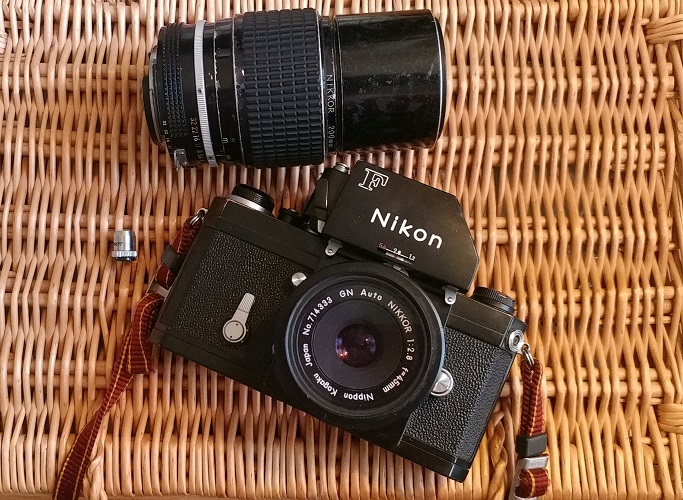
Features
Lens mount: Nikon F
Shutter: Titanium focal plane, 1~1/1000 + B
Meter: FTN head
Viewfinder: split-image focus dot (Type A)
ISO: 6~6400 (FTN head)
Battery: PX625 x2 (FTN head)
Optional Hotshoe
Weight: 872g (body)
Production: 1959~1973
Sold for $233 body only (1963), $1,983 (2021)
Purchased for $70 w/ 45mm f2.8 (2020)
History/Features
Any text about the Nikon F comes bundled with a lengthy plagarized diatribe about its history, not because the author is a Japanese-speaking, Mugicha-drinking historian, but the fact that the camera continues to emmanate this miasma of legitimacy. A legacy that demands a company-supplied backstory about the SLR's christ-like holy inception, a story that includes ihagees and leicas and vietnam and NASA. Have you seen my hesalite Speedmaster? It's been to the moon you know. I use the chronograph to time my kegels. I'm up to 90 seconds now. I leak through my jorts like an incontinent pensioner.
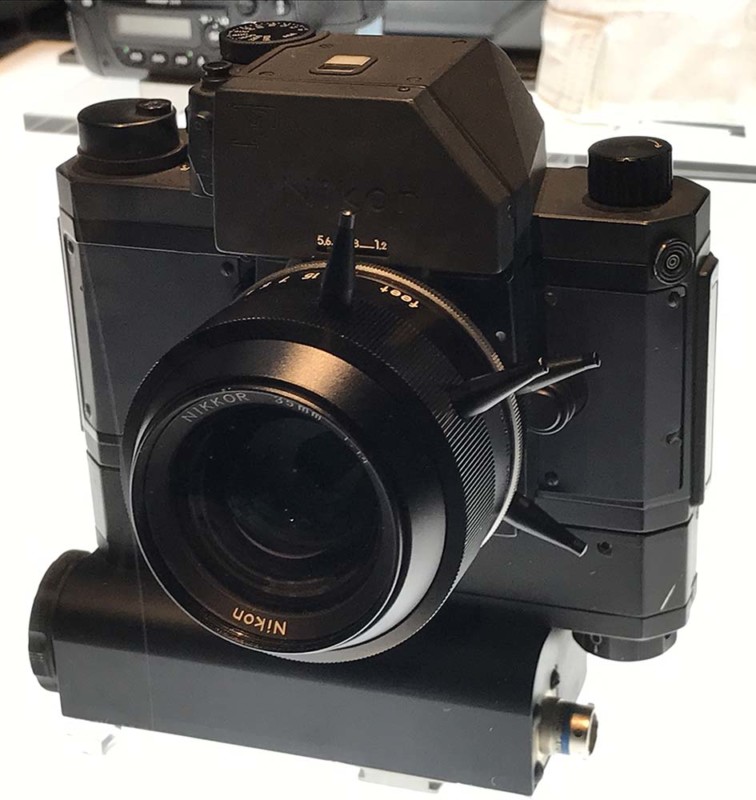 Apollo-era NASA FTN
Apollo-era NASA FTN
The reviewer moves on to say oh it's a million pounds and oh the finders come off isn't that just neat and it has a removable back isn't that charingly old-fashioned. The Nikon F, as expected of a late 50's SLR, was mind-manglingly new in the age of painted Zengakuren helmets but seems a touch anachronistic now. 5 years before the Nikon F went on sale the UK was still rationing food. In 1959 American jets were still routinely crashing in Japanese neighborhoods. The MOSFET was just invented. De Gaulle's reanimated corpse was brought to give France a paternalistic spanking.
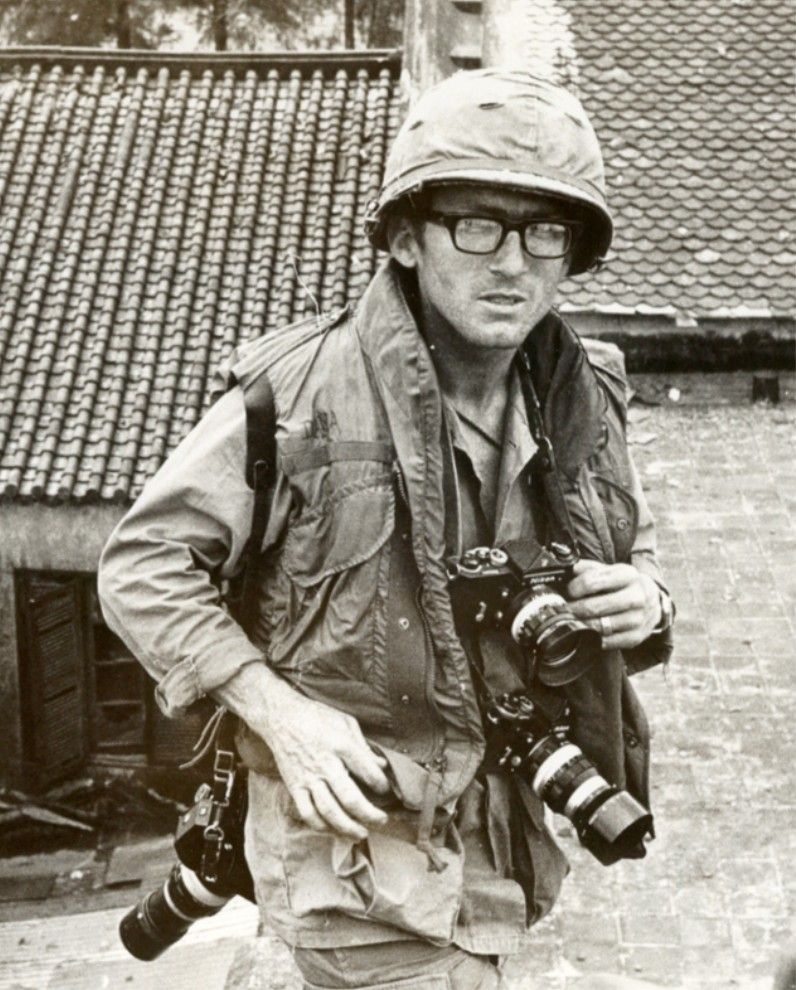 Dana Stone
Dana Stone
It was a different period, and that reflects upon the F's final form. Removable backs was one of the first changes to the F, evolving into a hinged door. The awkward shutter release was moved forward with the F2. In-prism metering was omitted completely with the F4. And these evolutionary dead ends have a residual impact when using the F, an experience that doesn't quite land within the forgiving "anything goes" mindset that comes with uncoupled rangefinders and no automatic mirror return. Of course grandpa is outwardly racist during thanksgiving, he grew up getting blasted with atmospheric nuke tests and leaded gas fumes. Neither does the Nikon F find itself in the "surprisingly modern" category of timeless minimalist designs that modern digital cameras like the Xpro and DF sought to emulate.
Within that I expected to grimace my way through using the F. As an OM cultist I didn't see the point. Why not get a FM or FE that's lighter and lacks the horrible shutter speed coupling. Why not an F2 that has a 1/2000 top speed and modern ergonomics?
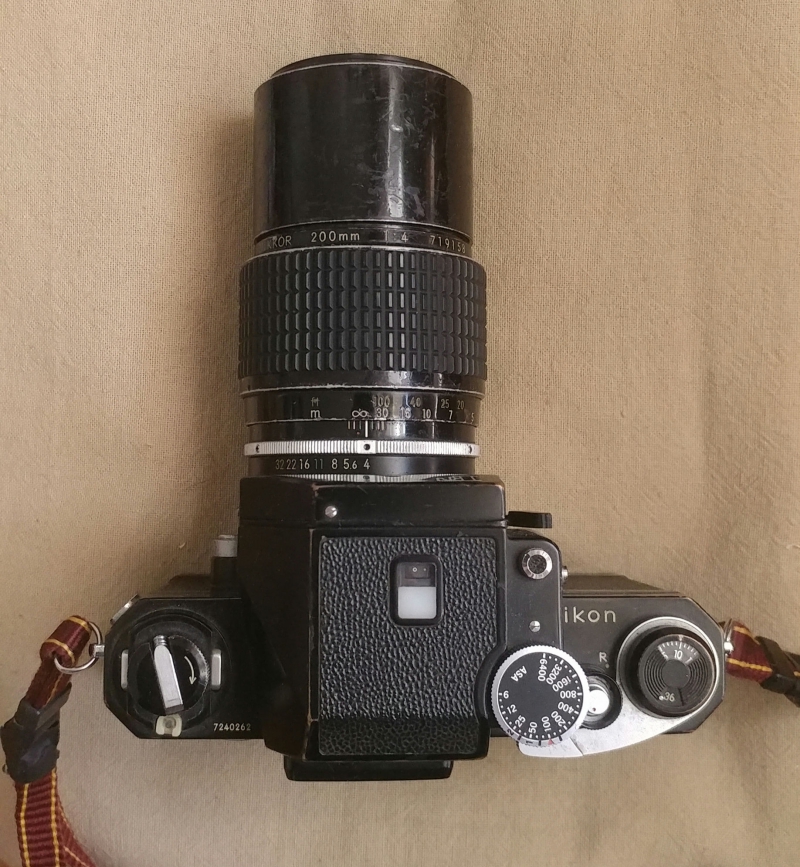
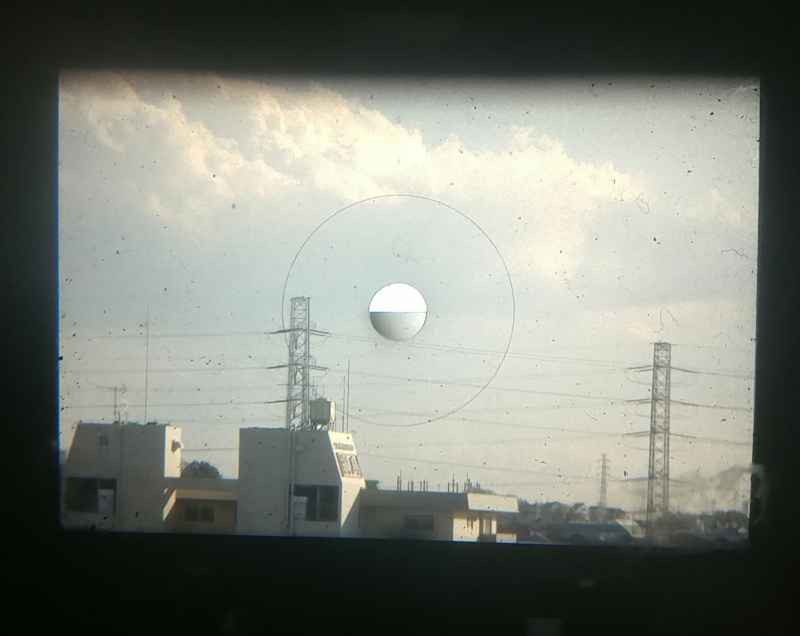
Legitimacy is king in a hobby haunted by the spectres of working professionals, of distant anecdotes about backup bodies and Kodachrome. And even past the obligations of knowing about the Nikon F, reading about the Nikon F, using the Nikon F, it still remains a compelling camera.
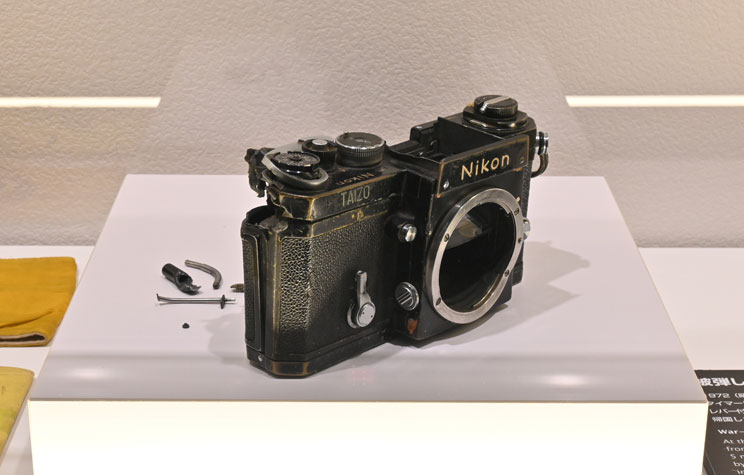 Taizo Ichinose's bullet-riddled F at the Nikon Museum
Taizo Ichinose's bullet-riddled F at the Nikon Museum
Film is obselete. To try and extract pragmatic meaning from using archaic mechanical contraptions older than African sovereignty is silly, and this camera helped me realize that. I am irrationally infatuated with the Nikon F whether or not I want to LARP as Dennis Hopper.
Handling
It's quirky aka not very intuitive. The control layout is sensible but it's the little things that get to you. With any metered head the shutter speed dial no longer rotates freely and you can only view selected settings from the back. The FTN head meter display is rather dim and only shows selected shutter speeds. In a masochistic move I'm mainly using the 45mm 2.8, a pancake lens whose aperture ring is somewhat hidden. Turning the aperture past 5.6 is now noticably stiffer. The shutter release is placed a few centimeters back, a vestigial carry over from the Nikon rangefinders' thumb focus ring.
All that said it's certainly not unpleasant. Removable backs are somewhat of a film camera rarity and is a breath of fresh air. The rewind button is a collar around the shutter release like the Canon P, eliminating an intrusive button on the bottom plate. The finder is still brighter and clearer than modern DSLRs. With the addition of an expensive non-metered prism I could see myself use this camera regularly.
Performance
Nikon lenses are well-regarded but I've always been curious to how that translates into images. Just like audio the hobby is haunted with the cosmic war between objectivists and subjectivists, of amorphous claims that no one seems interested in really picking apart. Are Minolta MD lenses better than Canon FD? Is a Summicron's results worth $2k? Have a sharpness test. Have my word salad. Have a bokeh test. "analytic." "3D pop." "warmth." "creamy."
For F mount glass the most prominent difference I've seen is the sharpness at wider apertures. Maybe I can become one of those photographers who never shoot below f/2, so much bokeh you feel like you've suddenly dveloped cataracts.
Conclusion
Carrying it around destroys my spine but I like it.
9/2/2021 Looks like there's some minor shuttercapping hoo hoo hee hee
back to top ⤴
